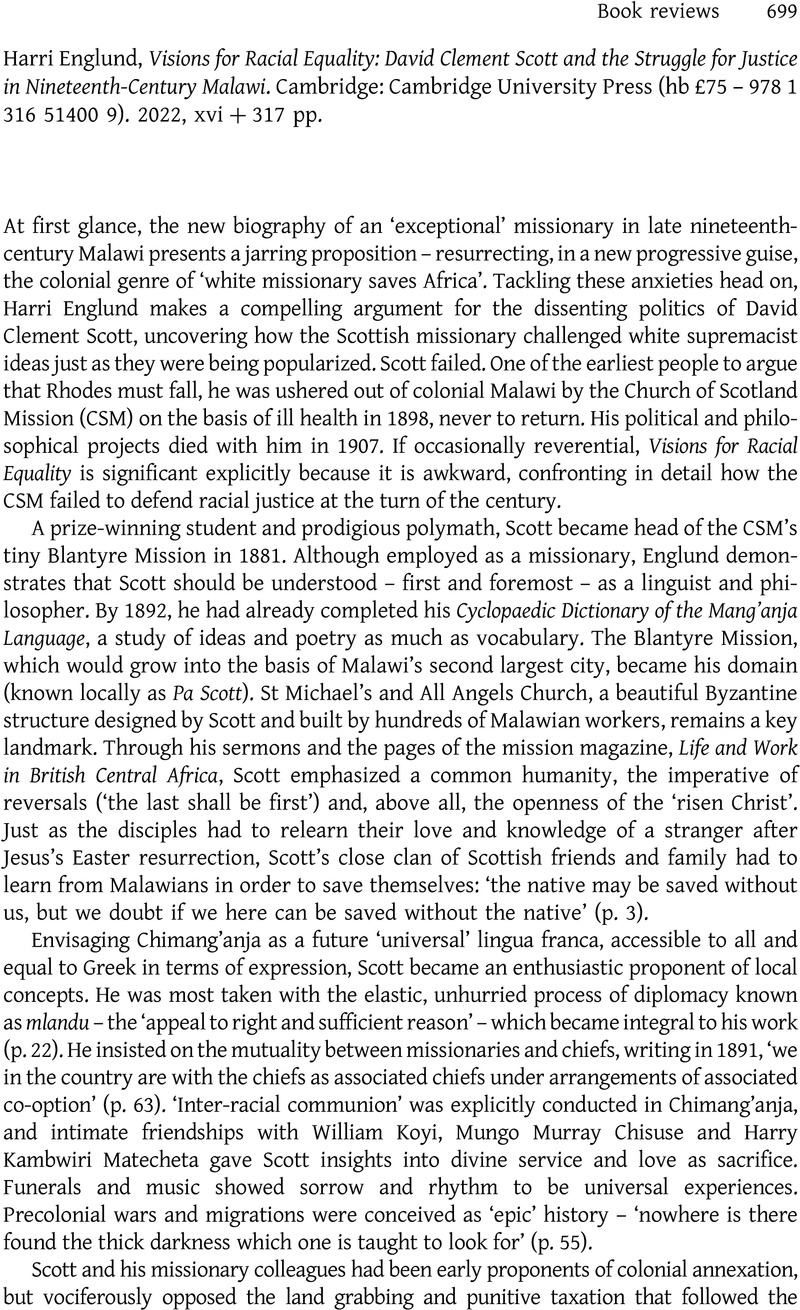No CrossRef data available.
Harri Englund, Visions for Racial Equality: David Clement Scott and the Struggle for Justice in Nineteenth-Century Malawi. Cambridge: Cambridge University Press (hb £75 – 978 1 316 51400 9). 2022, xvi + 317 pp.
Review products
Harri Englund, Visions for Racial Equality: David Clement Scott and the Struggle for Justice in Nineteenth-Century Malawi. Cambridge: Cambridge University Press (hb £75 – 978 1 316 51400 9). 2022, xvi + 317 pp.
Published online by Cambridge University Press: 22 January 2024
Abstract
An abstract is not available for this content so a preview has been provided. Please use the Get access link above for information on how to access this content.

- Type
- Reviews
- Information
- Copyright
- © The Author(s), 2024. Published by Cambridge University Press on behalf of the International African Institute



